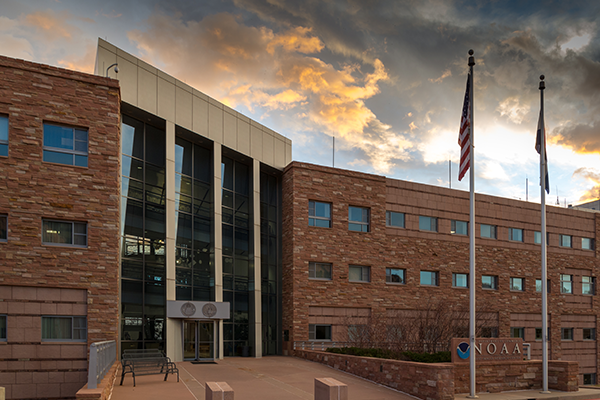
1) Implementation of the ECMWF cumulus convection scheme into the GFS, and 2) A stochastic approach to cumulus convection parameterization using cellular automata
Lisa Bengtsson
CIRES and ESRL Physical Sciences Laboratory
Thursday, May 09, 2019, 11:00 am
DSRC Room GC402
Abstract
I will use this opportunity to cover two topics related to cumulus convection parameterization. There is a longstanding challenge in numerical weather and climate prediction to accurately model the observed spectrum of tropical wave variability, including convectively coupled equatorial waves (CCEWs) and the Madden Julian Oscillation. The difficulty stems from the complex nature of the interaction between cumulus convection and the large-scale tropical circulation, many aspects of which must be parameterized using schemes with uncertain assumptions. In recent years, progress in modeling tropical wave variability has been made, owing to the adoption of higher resolution models, improvements in coupling between the atmosphere and ocean, and the introduction of more sophisticated parameterization schemes of sub-grid scale processes. For sub-seasonal prediction, the European Centre for Medium range Weather Forecasts (ECMWF) stands out in modeling tropical variability and has been shown in a recent study to be superior to the NOAA Global Forecast System (GFS). In the first part of the talk, I will cover the topic where we investigate the impacts of introducing the cumulus convection parameterization from the ECMWF model into a research version of the GFS. We highlight the importance of consistent treatment of processes between Planetary Boundary Layer (PBL) , cloud, radiation and convection schemes. We also investigate the relative role the ECMWF initial conditions and ECMWF cumulus convection scheme play in forecasting CCEWs within the GFS. In the second part of the talk I will cover the topic where we introduce a prognostic, stochastic, equation for the convective updraft area fraction in the cumulus convection scheme in the GFS that uses a cellular automaton (CA). The self‐organizational characteristics of the CA allow for lateral communication between adjacent numerical weather prediction (NWP) model grid boxes and add additional memory to the deep convection scheme. The CA acts in two horizontal dimensions, with finer grid spacing then the NWP model. The distribution of CA cells on the sub-grid represents a stochastic distribution of convective sub-grid plumes and follows a skewed distribution. We investigate the impact on convective organization and CCEWs and precipitation frequency distribution.
You must provide an accepted form of identification at the Visitor Center to obtain a vistor badge. Security personnel also inspect vehicles prior to entrance of the site. Please allow extra time for these procedures.
After receiving a badge, you must arrive at the DSRC Lobby at least 5 minutes before the seminar starts to meet your security escort. If you arrive after that time, you will not be allowed entry.
Foreign Nationals: Please email the seminar contact at least 48 hours prior to the seminar to provide additional information required for security purposes.
Seminar Contact: Tom.Statz@noaa.gov